Making Madeleines
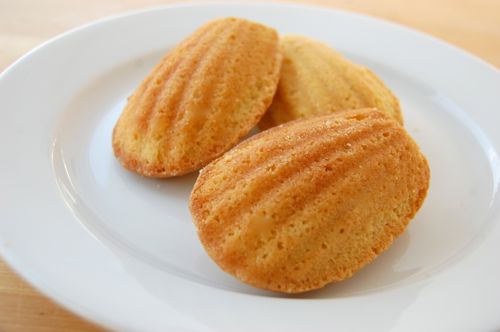
The European pastry style must be rubbing off on me, because I’m becoming a sucker for ultra-simple treats like Madeleines. Crunchy and caramelly on the outside, soft and creamy on the inside and sweet, rich and lemony all over, these are the sorts of things I’m finding increasingly addicting as I evolve as a baker.
That said, I confess that making archetypal goodies like Madeleines always makes me nervous. They’re like chocolate cup cookies: a universal favorite, yet something everyone likes in just their own way. Which means making them here on the blog is something of a risky venture. For every person who likes their Madeleines the way I make them, there’ll be someone else who’ll consider them an affront to all that’s good and holy. But what are you gonna do. Let’s hit it!
Heatter’s process worked extremely well for me. The main difference between it and others is that it requires no resting time. In fact she goes out of her way to underscore how important it is not to leave the batter sitting around. It flouts tradition, sure, but it works. Start by preheating your oven to 425 degrees Fahrenheit and assembling your ingredients. Next, sift your flour into a small bowl.

Place the butter in a microwave-safe dish.
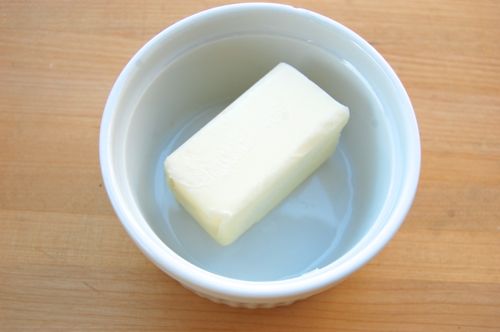
Zap it for 20 seconds, stir, and zap another ten until it’s liquid like so. Allow it to cool while you attend to the rest of your prep.
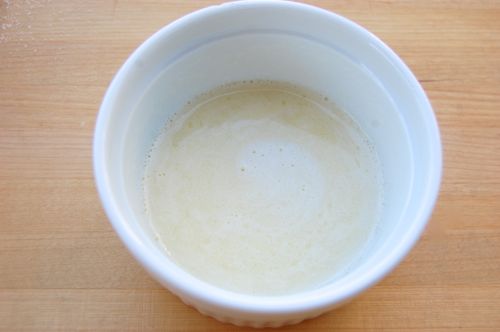
Begin with the pan. Dab a pastry brush into some very soft butter…
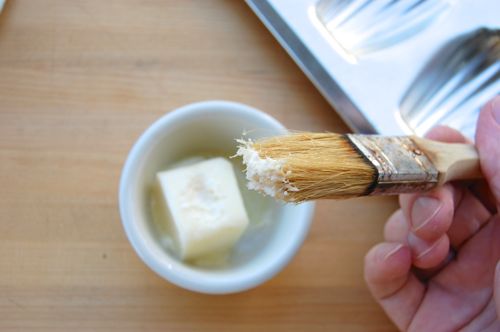
…and paint it onto the molds, making sure the brush strokes align with the direction of the fluting there.
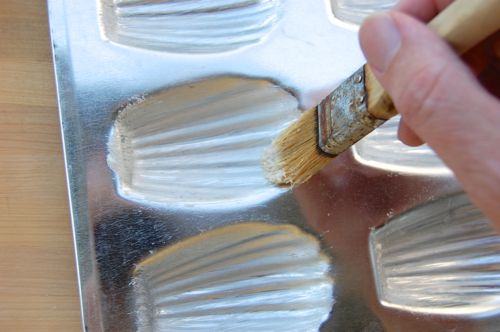
Now sprinkle in some dry bread crumbs, crushed or ground finely in a food processor.

Jiggle the pan around until the molds are well coated, then tip the pan up over a sheet pan, tapping it to shake out the hangers-on.

Ready to rock n’ roll.
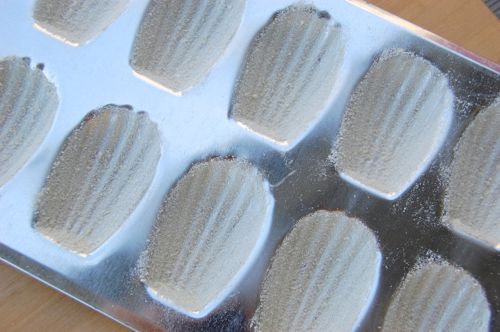
Now for the batter. Combine the egg, yolks, sugar and vanilla in the bowl of a mixer fitted with a paddle. Alternately use a medium bowl and a hand mixer. I’d have done that but I don’t own a hand mixer. I need to remember to put one on my Christmas list!
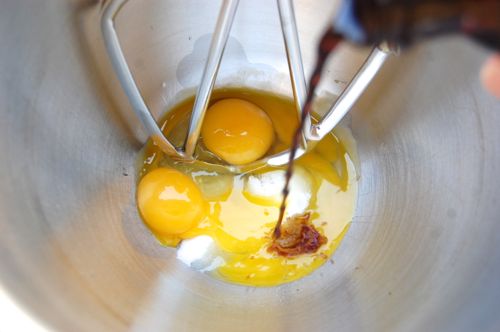
Beat the ingredients on medium-high until the mixture is very pale and light, and barely moves when you tip the bowl. Scrape once or twice as you go. The beater should look about like so when you pick it up:

With the machine running on low, start sprinkling in the flour. Stir until the flour is barely incorporated.
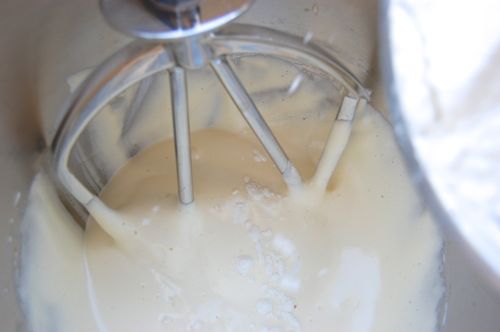
About like so:
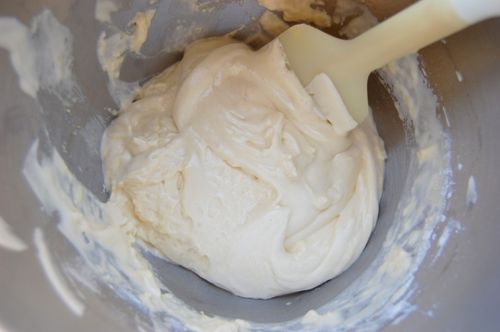
Remove the bowl from the mixer, then fold in the lemon zest.

Doot-dee-doo…
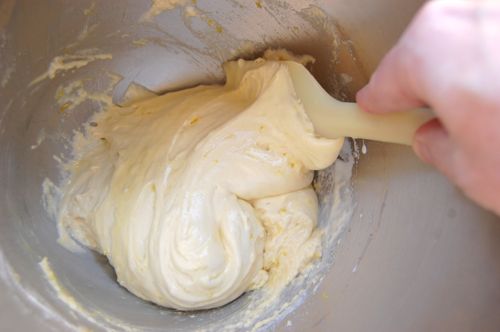
Once that’s done it’s time for the melted butter. Dribble in a teaspoon or two.
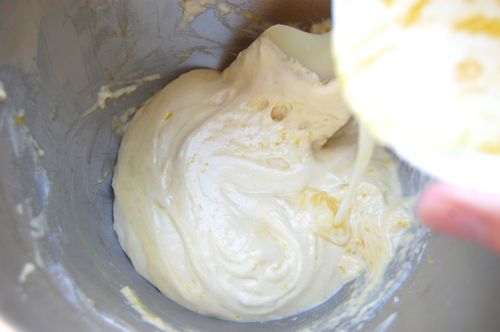
And fold. Keep that up until all the butter is in and the batter is homogenous and shiny.
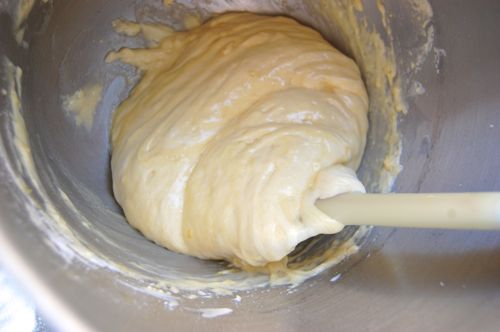
Spoon a heaping tablespoon of each into your molds. I was a little generous…I only had enough for eleven when I was done. C’est la vie, eh?
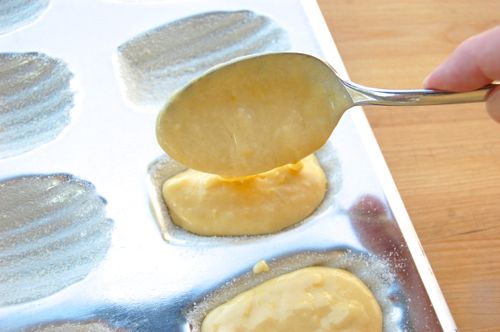
Bake about 12 minutes until they’ve crowned, are dark around the edges and spring back when you poke them.
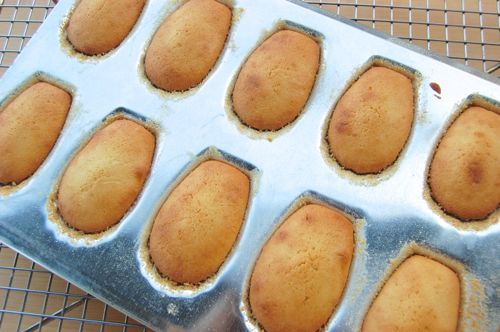
Now then, to de-pan, the process calls for placing a sheet pan on top of the mold and simply flipping it over. That usually works. If it doesn,’t, it probably means your bread crumbs were ground a little too small or that your oven may be running cool. The below batch didn’t want to realease, so I poked them gently on the side to release them. Out they came.
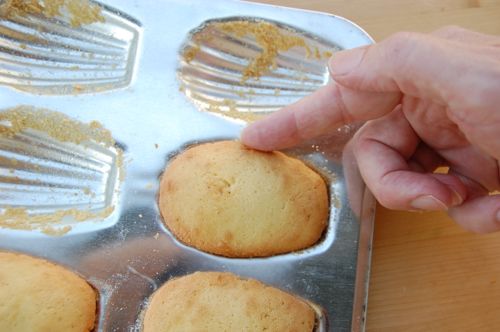
Hump or plump? Mine are the latter. I like volume and symmetry. Some bakers tell me that the only “true” shape of a Madeleine isn’t an evenly inflated shell shape but a flat cookie with a hump toward the back. They can go bake their own.
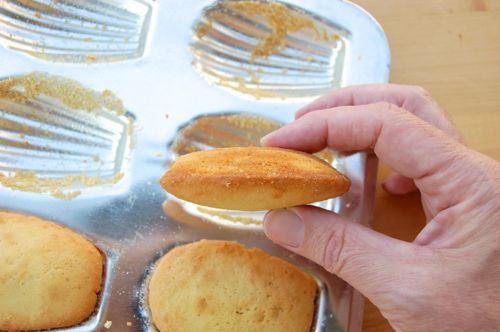
Anyway. They’re excellent served as-is with coffee or tea. They’re also very nice dipped into a little simple icing or even melted chocolate. Just eat them the first day if you want to consume them while they’re still soft. Tomorrow they’ll be fit only for dunking, but if it’s good enough for Proust, it’s good enough for me, non?
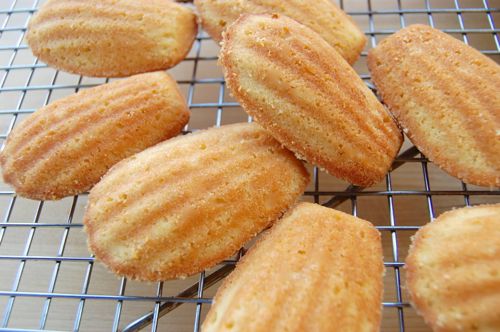
Here’s some help for getting the traditional bump.
http://www.doriegreenspan.com/2011/07/if-i-cant-remember-when.html
Thanks C!
Actually I saw that last week during my research. I guess my problem is that I’ve never eaten Madeleines in Paris. I find that look rather…unappealing. I’m not saying its wrong, maybe I’ve just spent my life eating too many cookies. But this will be very useful for all who are interested. Thanks again!
– Joe
Those look amazing. I love Maida Heatter’s books and ideas. I thinking flouting tradition is a good thing from time to time–especially when you get such pretty cookies from the process. How do they taste?
Very lemony and good. As I mentioned they’re one of those simple pleasure sort of things. Great with tea.
Thanks for the note!
– Joe
Hmmph. Why would humps be good in Madeleines when they’re bad in everything else? There are too many things in this world that people emulate for no good reason. Either humps make a difference in taste/texture or not. If they do, which do you prefer? If they don’t, then it is just a matter of appearance, and I think smooth looks better. Looks better in a big cake, looks better in a small one.
Hey Bronwyn!
My guess is that the Parisian style gives you a crunchy caramelly edge on end and a moist cake on the other, so it probably is a texture thing. But I’m with you in principle on this. Obsessive emulation is often just fashion, and I too like the symmetry and smoothness. Still I may do some fiddling over the weekend, just to see.
– Joe
I am reminded of “It’s not a bug, it’s a feature”.
Hehe….well said!
– Joe
I’m with you: I like my madeleines plump. The hump is weird and unattractive. I love traditional madeleines for their simplicity with a hint of lemon, but have also made them with browned butter (and then dipped them into a glaze made with Scotch) and for my most recent experiment, I omitted the lemon and beat in some seedless blackberry jam, which yielded a really interesting color of batter, but they bake up pleasantly golden brown.
Suh-weet!
Thanks for the great ideas, Beth!
I’ve never had a madeleine (I know, I know, I’m a philistine), but I’d like to try this recipe. I don’t particularly want to buy a madeleine pan merely to try them; I was wondering if I could try putting a tablespoonful of batter into a greased, crumb-coated muffin pan. Think that would work? The edges wouldn’t be the same, but . . .
I’m glad to see this today – I made my first madeleines a couple weeks ago, from the Laduree recipe. they came out perfect, but finding space in the refrigerator to hold the batter overnight was difficult. I think I’ll try this recipe the next time I want madeleines right now, not the next day.
Let me know what you think, Suzanne! I’ll be interested in your estimation of the difference.
Thanks so much for the email!
– Joe
Thank you so much Joe for leaning towards bakes like Madeleine. I do think the simple things in life are the best. I was on a diet but to hell with that! Looking forward to having this with a cup of strong coffee : ))
There aren’t too many calories in these, truly. They’re not terribly sweet or rich. Plus they’re small, packing a lot of enjoyment into a small package!
Have fun!
– Joe